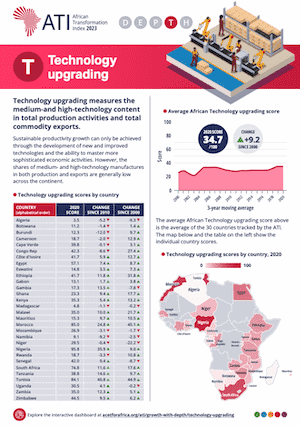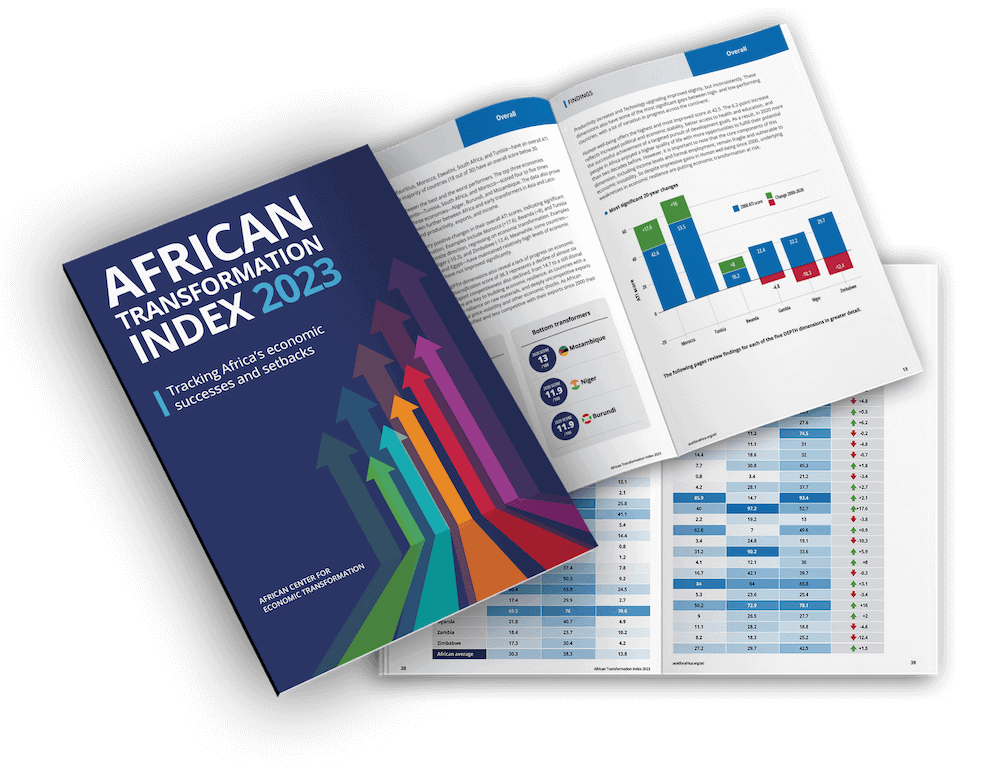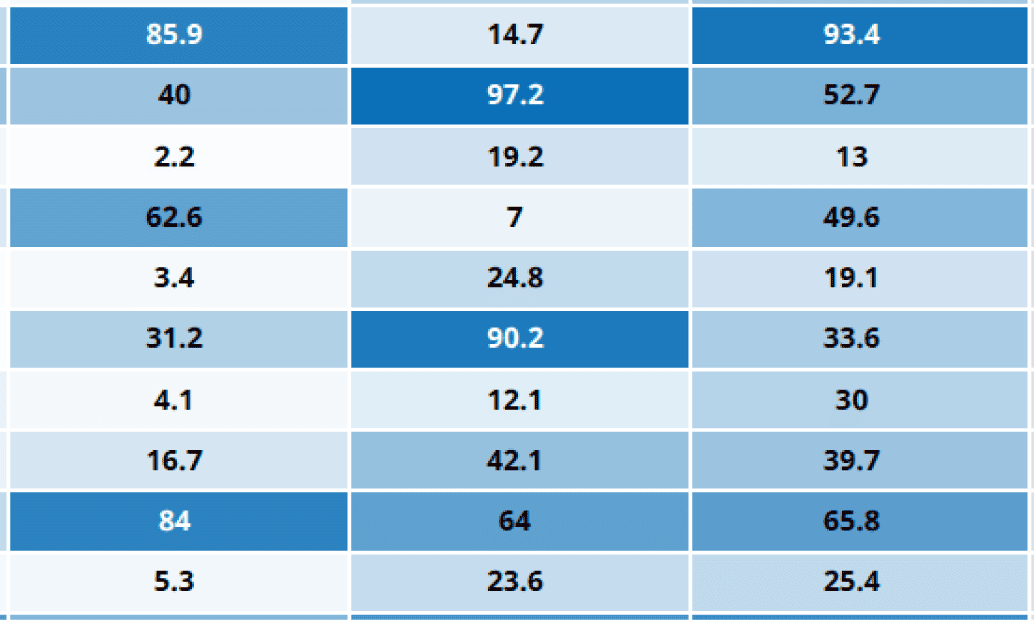ATI
Growth with DEPTH
Growth with DEPTH is an analytical framework that provides pathways for economic transformation in Africa. It makes the case that while economic growth is important, it is insufficient to drive Africa’s economic transformation. African economies must tackle the five dimensions of DEPTH.
Diversification
Export competitiveness
Productivity increases
Technology upgrading
Human well-being
Technology upgrading
Technology upgrading measures the medium-and high-technology content in total production activities and total exports.
Sustainable productivity growth can only be achieved through the development of new and improved technologies and the ability to master more sophisticated economic activities. The share of medium- and high-technology manufactures in production and exports has increased in Africa, but there is a wide gap between the highest- and lowest-performing countries.

Technology upgrading in the African Transformation Index

African average score
29.7 /100
Score change
since 2000
Indicators
Technology upgrading is measured through two indicators.
Technology production: The share of medium- and high-technology inputs in manufacturing value added.
Technology in exports: The share of medium- and high-technology products in total exports.
Findings
Progress on Technology upgrading has been patchy. Some countries, including Tunisia, Morocco, Nigeria, and South Africa, have made great strides over the last two decades, but the embodiment of technological innovation and scientific development in the production and exports of processed commodities has been relatively weak in most countries.
Global context
The first edition of the African Transformation Report in 2014 measured Africa’s progress in achieving economic transformation. It compared the continent’s progress with eight early transformers in Asia and Sout America: Brazil, Chile, Indonesia, Malaysia, Singapore, South Korea, Thailand, and Vietnam. These countries were chosen because they provided valuable lessons for the transformation of African economies. The latest edition updates the comparisons.
Pathways for improved Technology upgrading
Closing knowledge, skills, and technology gaps
Successful technology transfers often result from industrial policies that encourage partnerships between foreign and domestic investors in manufacturing. These policies include attracting FDI with advanced technology, acquiring strategic foreign firms, promoting joint ventures, and encourging collaboration in routines and teamwork between domestic and foreign enterprises. However, not every partnership yields the same results. For example, ACET research has shown that African countries that partner with OECD member countries see more investment in equity partnerships than those that partner with non-OECD members. Such partnerships also have more direct technology transfer clauses, worker training programs, research and development activities, and international quality certifications.

Lessons from early transformers
South Korea incentivized corporations to develop new technology and upgrade productive efficiency to compete in the global market for high-tech manufacturing and high-value services. The government supported innovation through the Research, Innovation and Enterprise Plan, which promoted greater collaboration between industry and research institutes. The country also invested heavily in education, especially in STEM fields.
Thailand had a major influx of FDI in electronics and automobiles but limited technological transfer. To seize the opportunity, the country established the Thailand Automotive Institute, a partnership between the automatives sector and the Ministry of Industry, to improve human resource development and technology transfer for Thai-owned suppliers.
Chile’s transformation has benefited significantly from technology transfer and investment financing through high FDI inflows. Chile is a good example of a commodity exporter that has experienced robust productivity growth despite an economy less concentrated in manufacturing production.
Examples from Africa
Tunisia launched two major programs that boosted its industrialization and openness to international markets: the Programme de Mise à Niveau upgrading program and the Priority Technological Investment program. These initiatives encouraged the modernization of the industrial sector and the participation of firms in high-tech value chain sectors. The country also reformed its higher education system to support a modern economy, prioritizing technical and vocational skills.

Diversification
Export competitiveness
Productivity increases
Technology upgrading
Human well-being
Discover more from the ATI
ATI Scorecard
Explore the data behind the economic transformation progress of 30 African countries between 2000-2020.
Growth with DEPTH
Explore the ATI in DEPTH and see how African countries performed on each dimension between 2000-2020.
Downloads







